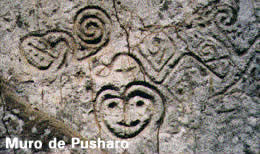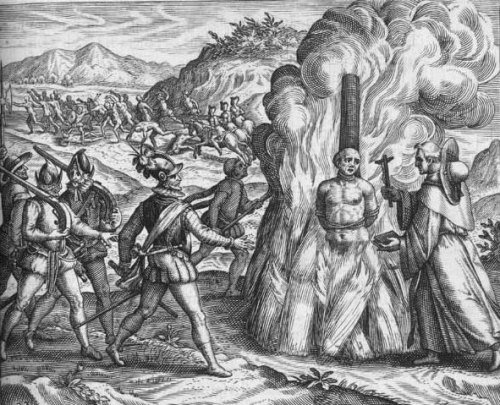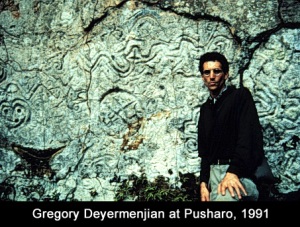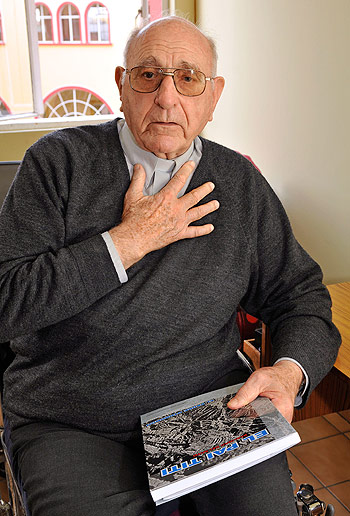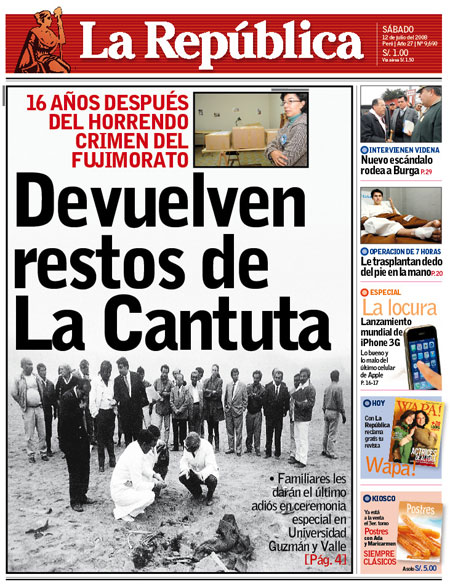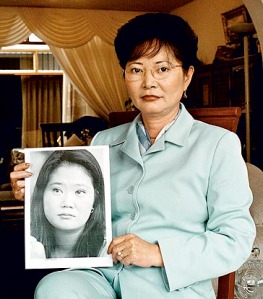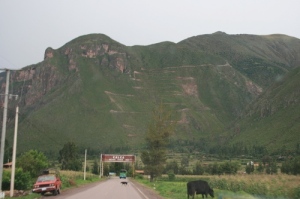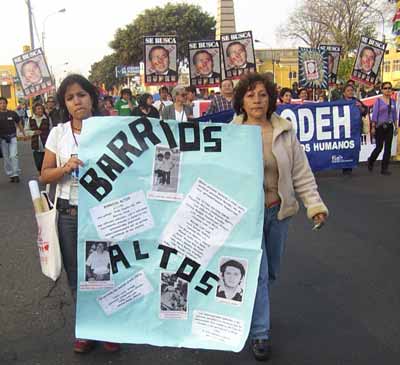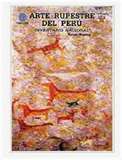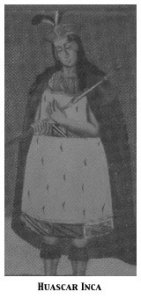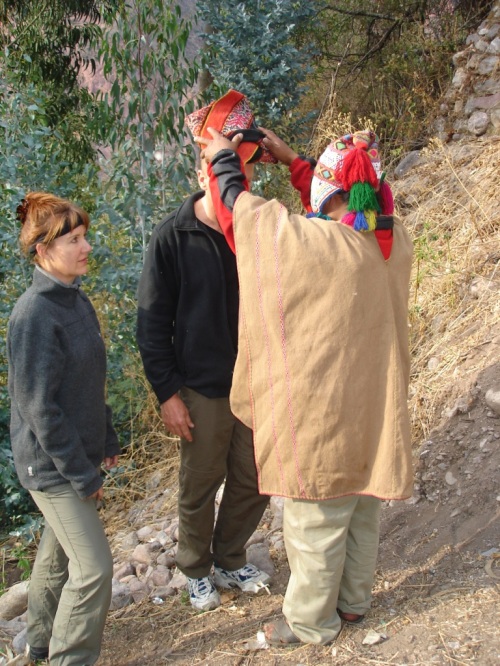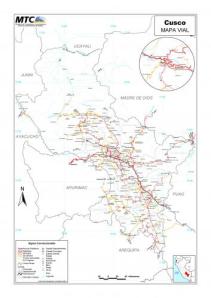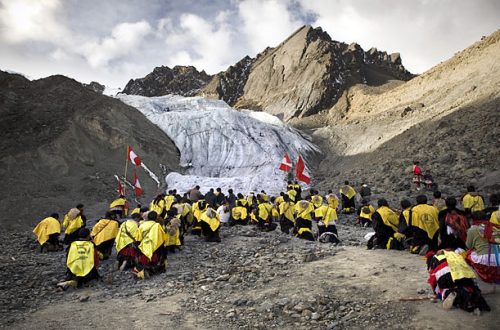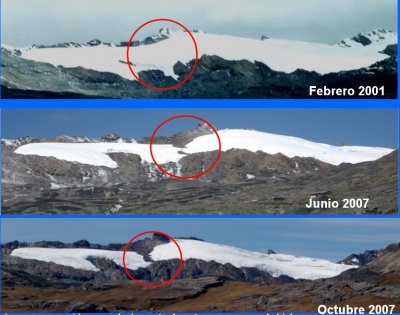Paititi corruption, theft and murder in PerúArthur Frederick Ide's Blog
Corruption has always been a part of the history of Perú (Quiroz, Alfonso W. (2008). Corrupt Circles: A History of Unbound Graft in Peru. Washington, C: Woodrow Wilson Center Press; Baltimore, MD: Johns Hopkins University Press, c2008) as it has in all nations. While corruption has always been a part of the history of Perú, it has never been more blatant, more vile and vulgar, and extremist than the torturous, treasonous days of Alberto Fujimori and his daughter Keiko Sophia Fujimori who amalgamated and absquatulated the peculated reign of terror of the most fanatical Fujimoristas in the National Congress of Perú.
In Perú, a desperate Keiko Fujimori openly attempted to buy votes in exchange for food. The poor welcomed it, but it was only the tip of the iceberg of fraud and theft that has been common in nearly every election in Perú, and was most common during the political career of her disgraced father, the former dictator Alberto Fujimori. Buying votes is the least of the crimes Keiko Sophia Fujimori has committed against the people and nation of Perú (http://www.diario16.pe/noticia/4562-keiko-fujimori-reparte-comida-entre-los-pobres-a-cambio-de-votos).
Herbert Mujica Rojas (the last name is also written as Mujicarojas for publication purposes) wrote a brief article on the wealth of information seasoned in the scantly printed (there are only 180 copies, a patent paucity in a nation such as Perú where there is a critical need for more) volume El Paí-Titi Padre Otorongo by Juan Carlos Polentini (Editorial Salesiana, Lima). In his article Mujicarojas (Mujicarojas, Herberto (1999). Kenya y Keiko Fujimori y el robo del oro del Paititi) lauds the pulchritudinous of Father Polentini’s pen, noting that the Salesian priest “meditated, [and] thought deeply,” before he released the manuscript to the printer, hesitating whether to make public what he as afraid to write for it would surprise many in Perú.” For that reason, Polentinin parsed: “To save the reader from any great discomfort” he would, “use the fewest words possible and thus avoid any retaliation by those who supported the tyrants of the early twenty-first century.”
Father Polentini patiently, prophetically yet passionately noted: “In the end [he proceeded with the publication even though he] had so many problems in past years because of Paititi (El Paí Titi; for some it was the fabled El Dorado), one more will also give … more flavor to [your] life.” His words proved true.
The Paititi legend in Perú revolves around the popular story of a culture-hero Inkarri (possibly a corruption of the Spanish for Inka King: Inka-rey), who, after he had founded Q’ero and Qosqo [Spanish: Cuzco], retreated toward the jungles of Pantiacolla to live out the rest of his days in his refuge city of Paititi, which native legends claim Inkarri founded. (Concerning the connection of Inkarrí with “Paititi,” see” “In Search of Paititi: Following the Road of Stone into an Unknown Peru” by Gregory Deyermenjian, in the Spring 2006 issue ofThe Explorers Journal; and “The Petroglyphs of Pusharo: Peru’s Amazonian Riddle,” by Gregory Deyermenjian, in the Volume 2 Number 3 (2000) issue ofAthena Review.)
In 1533, it is reported, the treasured thief and Spanish conqueror for the Crown, Francisco Pizarro González, Marquess (c. 1471 or 1476 – 26 June 1541) approached the Capital City of the Inkas consumed with an overwhelming, near cannibalizing lust for reputed treasures reported to him by his malodorous and mephitic men who collectively were not only iniquitous and insidious but nefarious in every way–traits he applauded. Qosqo, the golden city of the Andes, was, the men who had barely disembarked boasted, to have a temple where the walls were covered with more than 700 sheets of solid gold; each sheet, they proclaimed weighed more than 2 kilograms.
Qosqo, the original city of gold, now known as Cusco, held a surprise for the approaching amoral army of Pizarro, for at it’s center was situated the Qoricancha: “The Golden Courtyard”. It was the Incas most important temple dedicated to their creator God(dess): the Sun, whom the merciless mendicant monks and parasitic priests who journeyed across the ocean’s wide span struggled to get the “naked” natives to believe was a copy of their Son of God. The story that the theological terrorists who butchered the wives, children and elderly of the Inkas held none of the majesty of the original Inka religion. If bones could scream, a bloodcurdling din would be reverberating through a 500-year-old cemetery in Peru. Human skeletons unearthed there have yielded the first direct evidence of Inca fatalities caused by Spanish conquerors scientists report in the March 23 1010 issue of the American Journal of Physical Anthropology. The skulls of the multitude of Inkas slaughtered were essentially crushed, repeatedly stabbed or struck, or shot through by gunshot. One male skull had three small rectangular openings in the back of the head resembling those on skulls from a 1461 battlefield cemetery in England when medieval weapons tipped with steel spikes or sharp beaks caused the deathly wounds by piercing then pulling upward to kill the victim. (http://www.wired.com/wiredscience/2010/04/inca-skeletons/).
Inkarri was a zealous and fervent Inka god who lived through the Inka kings, the last one being Atahualpa or Atawallpa (March 20, 1497 Caranqui, Ecuador – Cajamarca, July 26, 1533), was the last Sapa Inca or sovereign emperor of the Tahuantinsuyu (the official name of the Inca Empire). When Pizarro and his priests came to carry off plunder, slaves and more, Inkarri through the mouth of Atahualpa reminded the thief from Spain that the god (the Inkas were a heonteistic [καθ’ ἕνα θεόν {kath’ hena theon}] —”one god at a time” people who refused to reject a plurality or even a single god, but worshipped each in time so as to not offend any god that might exist) the Inkas worshipped was more loving than the ones held up to them by priests who preyed upon the people of the mountains while praying over their funeral fires as they became martyrs to Mountain Goddess.
The words of Inkarri’s Servant (Atahualpa) fell on deaf ears. The Spanishconquistadores (conquerors) not only continued plundering, raping and murdering, burning sacred forests and pollution holy water that followed in sacred streams, but tortured and executed the last ruler of the Inka people, Atahualpa, who was executed identical to the way Jesus of the New Testament was put to death–at a stake [the cross (crux) was the invention of Justin Martyr, who in the First Century only used Latin, and who was read only in the west; in the East and in the original scrolls those who were learned and carried out the publication of what would ultimately become the New Testament used Greek and the word σταυρός (or stake) as it is still used in the East (Greek Orthodoxy). When the similarity became apparent to a few, it intensified Spanish attacks on the Inkas and led to the Spaniard’s use of garrote (Latin: laqueus) which had been used in Rome in the first century BCE, and when the Christian Church was officially created by the Emperor Constantine in the Fourth Century CE, became the favored means of execution of heretics.
Garrote became extremely popular in medieval Spain and was used to strangle the Inka leader as he was being martyred. Atahualpa’s final breath was etched into history, for the Spaniards feared the similarity between the last King of Inkas since his prophesied death and resurrection was too close to that of the New Testament Jesus, Inkarri (a name that can be traced back
to ancient Egypt and Tibet, in both cases becoming a saviour god who was killed but promised to rise up after three days and ascend into the heaves from which he would come to rule in time) vowed that he would come back one day to avenge the death of the great leader. There are pictographs in caves in the Andes that show prototheological ideas, including the resurrection of a mortal and the ultimate embrace of a deity with the mortal, indicating a concept of life after death. What made the Inka theology unique, and in many ways superior to the message minced by missionaries sailing with Pizarro’s pandering protagonists is that in Inka theology a god can exist in many forms at the same time and that any mortal offering worship or praise using different names for the deity does not imply polytheism, but shows a greater a sophisticated version of monotheism in that it allows the worshiper to believe in essentially one Supreme Being while still appreciating and not limiting the names, expressions, or manifestations used to describe the deity. At the same time, the worship was neither regulated nor regimented but more open–although the Inka King was the ultimate authority who was seen as the Supreme Earthly Father, much as the Pope in Rome.
The Spaniards feared popular reaction for the world had settled under a suffocating mantle that was an epoch where what the Spaniards considered superstition was true theology to the Inkas and it held firm that their beloved king had died but would rise again and ascend into heave and rule justly all people and animals that worked in harmony with the planet. To avoid the possible resurrection of Inkarri, the Spaniards buried this Lord’s body parts in several places around the Inka kingdom: his head was buried under what would become the presidential palace in Lima, his arms buried under the Waqaypata (Square of Tears) in Cuzco, and his legs in the soil of Ayacucho. Before his body was cut into pieces, a common torture in that day, Atahualpa Inkarri promised he would rise up one day, his body revitalized and whole (in a manner similar to that of Osiris of ancient Egypt), and he would take back his kingdom and restore peace between Pachamama (goddess of the earth) and her sons (the people who lived in harmony with the earth). Because his voice carried over the carnage and screams of those being persecuted, the Inkas were attacked with greater zeal under Pizarro’s orders that as many Inkas be killed as was possible in one day.
The execution of Inka warriors allowed Pizarro to carry out his poisoned plans. It has been written that tons of Inka gold were melted down by the Conquistadors within a month of the sacking of Cusco. These innumerable tons had strange destinies, although some claim that most of the gold that was sent back to Spain was lost at sea; the true resting place is unknown and the veracity of each story unverifiable.
What can be assumed is that much of the native god was lost or sank to the bottom of the Atlantic due to Spain’s numerous naval battles with their England and other continental rivals. All that remains are stories of immense wealth. These accounts were viewed as fables, yet they encouraged other bounty hunters and tomb raiders to seek out and plunder Perú, and especially the area of Cuzco. The destiny for most of these thieves, the majority speaking Castellano Spanish, however, was the fabled city of Paititi.
Paititi was much like the legendary El Dorado—the city of gold. There is no proof that it was ever found, but numerous explorers tried to find it and rob it of its wealth. Most perished, many being killed by natives, others dying of tropical diseases, and some even being sacrificed to the gods mourning the death of the last Inka king. El Dorado remained a lost city, which, to many was a utopian city of unheralded riches that would remain until the last Inka king rose from his grave to rule over the world.
It was claimed by storytellers and fortune hunters that the treasure lies east of the Andes, hidden somewhere within the remote rain forests of southeast Perú, northern Bolivia or southwest Brazil. Instead of finding the gold easily, as many explorers and gold-seekers believed would be their destiny, they learned that the prophesy that there would be streets paved with gold leading to a New World Gan Eden–a paradise for the fortunate and the elect of heaven–was not to be realized in their lifetime.
No streets paved with gold were found anywhere in the Andes. Instead, a large city was discovered in 1600 by the mercenary butcher who had taken Holy Orders: the Jesuit missionary Andres Lopez who described a metropolitan area rich in gold, silver and jewels, located in the middle of the tropical jungle called Paititi by the natives (see: Juan Carlos Polentini Wester (1979). Por la Rutas del Paititi; and Juan Carlos Polentini Wester (1999). El Paí Titi. Lima, Perú : Asociación Librería Editorial Salesiana on OCLC 43562342 athttp://www.worldcat.org/title/pai-titi/oclc/43562342. Polentini Wester, an Argentinian Salesian priest and explorer. He was
followed in 2008, by American psychologist-explorer Gregory Deyermenjian {see: “In Search of Paititi: Following the Road of Stone into an Unknown Peru” by Gregory Deyermenjian, in the Spring 2006 issue of The Explorers Journal; and “The Petroglyphs of Pusharo: Peru’s Amazonian Riddle,” by Gregory Deyermenjian, in the Volume 2 Number 3 (2000) issue of Athena Review.} and the Peruvian frontiersman, cartographer and explorer Paulino Mamani {see: http://www.paititi.com/search-for-paititi.html andhttp://www.paititi.com/index.html for index}).
Father Polentini noted, in his book “The Paititi has been a weight [for me to think and write about…” His primary fear was that the treasures would be stolen for personal gain, and that a new group of thieves would ruin what was left of the Inka Empire and its history and culture.
Polentini, realizing the importance of his project and discovery, and recognizing that it sparked little interest among powerful Peruanos, was crestfallen. He wrote: ” that many times I wanted to … abandon my project,” and came close to doing so because his peers had made it “so warped and vilified, mocked and ignored requiring me to do something to bring it to light for the sake of Perú, and make amends [for the sins, transgressions, and murders of those who came to Perú that he found inward” security that gave me [the] confidence [to proceed with his work]. Alas, he noted: “Unfortunately I did not find support and understanding by organizations and individuals relevant to the subject. Instead I found teasing, criticism, insults, slander, lawsuits, greed, personal interest, deception, desires of easy wealth, and another worse. I thank the few who have accepted and helped me (Agradezco a los pocos [italics for emphasis are mine] que sí me han aceptado y colaborado).” When Father Polentini mentioned his find, and his thoughts on what Perú had as a hidden history to the then-current president, Dictator Alberto Fujimori, Fujimori said nothing at first.
No promises were made. Alberto had to consult with his daughter who was the First Lady of Perú and his chief spy who had determined that life was so cheap than any dissenter could be dispatched without notice or judicial review, as Fujimori had suspended all basic human rights and civil liberties in Perú and was determined on autocratic self-rule with himself and his children as the authorities in Perú.Vladimiro Montesinos chief spy of Perú would be one Fujimori could lean on and consult on this matter.
Polentini mourned his hesitancy and even considered his conversation with the Perú dictator a grave act (one he considered a sin) as Fujimori, who with all pretended prudence consulted another priest who was no friend of Paititi or the history of Perú and opposed to Polentini that he questioned “Polentini and his cronies are a collection of looters?” To this the Father knew that the response was a “mortal sin [and aggravated libel].”
Alberto Fujimori was no better than his venal children, odiously opportunistic, seeking an empire of their own in the rays of the sun where the once legendary Inkarri stood, and all leagued tight with Vladimiro Montesinos, chief spy of the Fujimori government as Montesinos provided the Fujimori children with wealth (for which reason, Alberto paid Montesinos $15 million from the Perú treasury as “a gift from the people of Perú” where Montesinos remains hailed as a hero for executing members of The Shining Path (a Maoist group) who wanted to redistribute the land to the poor and better their lot in life.
Polentini continued with his exposition which is the soul and substance of his limited edition, a book that should have been widely distributed not only throughout Perú but also throughout the world. This report, when it was released “was the cause of all the disaster that followed” the priest opined. Previously, no one had succeeded in his or her quest to find the fabled city of extraordinary riches and unimagined wealth. Most fortune hunters died during their expeditions, leaving token records at best of their journeys and the fables the locals told of El Dorado.
While others were looking for immediate wealth, the priest wanted to seek out something so serious and so sacrosanct, that promised more than great riches from an unknown time, clime, and civilization hidden from history until recently, that should its wealth come to light there would be rush for it and a grab for power far worse than anything that Perú experienced under the Spaniards and of those who mined gold in rivers in California–it would give Perú a new identity and demonstrate one of the many peaks in Perú history and its advanced civilization.
It became an eternal quest to find the legendary city and its gold to show the world (especially in museums in Perú and others that would show that Perú had a growing history before Pizarro) the grandeur that was once Perú. Only late in life did he get the verbal support and encouragement of one president–Alberto Fujimori–and his daughter Keiko Sophia Fujimori and a son, Kenji (Kenya) who aspired to political office as a way to enrich himself at the expenses of the people. They were as corrupt and greedy as their father.
Keiko Sophia Fujimori’s history was written in the sinews of greed and signed in blood her father would extract from Perú students. Education was a goal but not in the schools of Perú, for Alberto determined that his daughter would study in the USA and earn a degree there–a degree that had more value and required higher standards than any degree in Perú or any of its ancient universities or the plethora of new universities that Albert authorized while dictator. The main difference being not only in resources (Perú’s libraries are small in comparison to those at academic centers in the USA or Europe, and in Perú the law only requires a “professor” to have obtained a Master degree, where in the USA it is imperative to have the doctorate, and to stay on faculty publications are required, whereas few professors in Perú have written anything and what has been written has not undergone peer review and what is written is weak and frequently is self-published; there has only been one Vargas Llosa).
Keiko’s own mother, Congresswoman Susana Shizuko Higuchi Miyagawa (born April 26, 1960) who was divorced from Alberto Fujimori after repeated physical assaults and increasing mental pressure from her husband and children has described her daughter ” [she appears as an] angel to outsiders, but for me she has devil’s face” (“Tiene angel para la gente de afuera, pero para mi tiene cara de diablo. Son intimidates…”. See: “El dia que todo cambío” as a part of “Dolor de madre” in El Popular 8 May 2011, p. 4) and is a replica of deceit and self-aggrandizement.
On four separate occasions Polentini, an Argentinian Salesian priest, sent Alberto Fujimori documentation indicating exactly where the famed city of Inkarri was located. Once, Polentini wrote, he actually placed a letter detailing the location of the Sacred Valley of the Inkas: Calca, into the hands of Fujimori. Later, lamentably, Polentini realized his grave mistake.
Alberto Fujimori read the letter, and given his custom of sharing messages with his children, it is most likely that Keiko and Kenya (Kenji) also read the priest’s petition and noted the exact location of “unbelievable wealth”. After reading the letter from the Salesian priest, the Perú dictator questioned Polentini, what should be done and when it was possible to execute a plan.
Polentini responded that Calca (one of the thirteen provinces in the Cusco region in the southern highlands of Perú) was the Sacred Valley of the Inkas, attempting to give the Dictator a basic history lesson on the country he ruled with an iron fist (as seen in Fujimori’s massacre of a university professor and nine students from Lima’s La Cantuta University [actually: National University of Education Enrique Guzmán y Valle (Spanish: Universidad Nacional de Educación Enrique Guzmán y Valle)] who were abducted by a military death squad and “disappeared”, took place in Peru on 18 July 1992.
The military (Grupo Colina) were later pardoned as the Attorney General blocked the participation of world-renowned foreign forensic and anthropologists, sent at the request of Amnesty International, a few days after the finding of the remains, precisely, at the most suitable moment to examine and identify them;http://afp.google.com/article/ALeqM5hIhZGtOSjyj116LqTjR… which was common practice by the corrupt military who followed the Dictator for money and “glory”–leading even to attacks on barrios, such as the Barrios Altos).
Fujimori had little to say about the massacres, and nothing to comment on when it was reported that even small children were slaughtered. Keiko was as silent as the grave when the bodies of her perceived enemies were carried away like disposable kindling wood and continued not to speak out as First Lady, for her loyalty was with her father and the family enrichment.
The Fujimoris did not respond, but three years after their meeting Mujicarojas, Polentini learned that the Peruvian usurper had consulted another, less scrupulous priest who would go on to strip the ancient treasure for his own enrichment and that of the Fujimoris as a family of greedy, self-serving, unproductive people would do nothing to help Perú but only strip it of its wealth which he feared would be shipped to Japan which remained the motherland in the hearts of the Fujimoris who never cared for Perú. Polentini wrote:
In 1996[,] I left Cusco and [moved to] Lima [to] the Hermanitas de los Ancianos Desamparados [Sisters of the Abandoned Elderly]. I had no one to help me. I was given refuge and asylum in the Hogar de Ancianos de la Avenida Brasil [Nursing Home on Brasil Avenue], where I continue [to live in] my old age.
The year 1998[, a senior official from the Discovery Channel] was presented [introduced] to me in this nursing [home] … [with an interest] to make [a documentary of my] … discovery of Paititi with all the details as they can do. Of course I accepted, [and] I left the gift of a television, …. What [has been] said in the INRENA, [Instituto Nacional de Recursos Naturales / National Institute of Natural Resources]: a Machu Pichu organization that INRENA makes approximately 1,600,000 USD per year (www.inrena.gob.pe), INC (National Cultural Institute: Instituto Nacional Culturo), etc. against the priest who never returned [to] Polentini!
Thanks to the support and encouragement of Mrs. María del Carmen Rodríguez del Solar, I published my book on Paititi in June 1999 (Polentini Wester, Juan Carlos (1999) Father Otorongo: Black Jaguar [author of the books “Por la Rutas del Paititi” {1979} the 191 pages volume was surpressed by the Fujimoris, and is only found in Switzerland at the RomeroHaus as found in the Bibliothekskatalog IDS Luzern atwww.worldcat.org; and El Paí Titi ¡Padre Otorongo! {1999}, a 2002 edition of 141 pages a copy of which is in the PUCP Biblioteca de Ciencias of San Miguel (Lima 32) Peru;). Only 180 copies because no one agreed to cooperate and there was a universal fear of Alberto, Keiko and Kenji Fujimori who were determined to suppress the priest’s tale]. I thought at least that no investigation would be lost. And [it was] not lost. [My book] gave the coordinates of the city, of course with a small error. We will see what happened.
Some of those few books certainly fell into the hands of the famous INS and his boss (Vladimiro Mostesinos [Vladimiro Ilyich Montesinos Torres (born May 20, 1945) was the long-standing head of Peru’s intelligence service, Servicio de Inteligencia Nacional (SIN), under President Alberto Fujimori who kept nothing secret from his daughter/First Lady: Keiko Fujimori.
In 2000, secret videos were televised showing Mostesinos bribing an elected congressman to leave the opposition and join the Fujimorist side of Congress. The Perú Congress was easily bought, and allegiances were not to an elusive and seldom experienced democracy, but to personal enrichment and temporary fame, with legislators changing sides as often as most changed their underwear. Today, voters in Perú know little about their congressional candidates but elect pseudoleaders based on popularity, thereby accounting for how three soccer stars made it into Congress with no
experience, while Kenji Fujimori, the youngest and least settled of Alberto’s children, has no noticeable solid academic background (he is listed as “an agricultural engineering graduate” as his father was a professor of agriculture, but (like his sister Keiko who never worked one day in her lifetime) has only been prepared to politics to satisfy his own needs. Kenji is a part of FaceBook, LinkedIn (he does not accept comments), and on YouTube. His goal is to support his sister and free his father. His relationship with his mother, another Congresswoman in Lima, is strained, but she has made no public statement about her youngest child as she has about the corruption that is the persona of Keiko Fujimori.
Because of the ensuing scandal, Montesinos fled Perú, and indirectly hastened the resignation of Fujimori. But before the resignation took place, with Alberto Fujimori faxing in his final statement from Japan, Montesino murdered or had murdered thousands of Peruanos who stood in the way of the personal enrichment of the Fujimoris and himself). Subsequent investigations by the Perú government after Fujimori’s fall, midnight flight to Japan to escape Perú justice, and, years later in 2009, attempted return to Perú to resume his dictatorship, it was revealed that Montesinos was at the center of a vast web of illegal activities, including embezzlement, graft, gun-running, and drug trafficking the latter being a way to fast riches and not eschewed by many politicians throughout Perú—especially Fujimoristas who saw the dictator as their way to personal gain and glory.
Surprisingly, Montesinos was tried, convicted and sentenced for numerous charges despite his close and strong connections with the Central Intelligence Agency (CIA), of the United States of North America who kept various military forces and paramilitary forces in Perú not only to counterattack narcotraffickers but also those who stood up against the murderous regime of the Fujimoristas and paid, illegally, Montesinos millions of dollars to “erase” (murder) members of the Shining Path. This nefarious international intelligence agency, the CIA, paid Montesinos no less than $10 million out of the government of the USA’s Treasury, being earmarked for covert anti-terrorist activities which allowed for the political assassinations of those the CIA considered to be communists (decades earlier defined by US Senator Joe McCarthy (R-WI) and US Congressman Richard Milhouse Nixon (R-CA) and other corrupt leaders in Congress and advisers to the president (for example, former Secretary of State Henry Kissinger paid to have President Salvadore Allende of Chile murdered after former President Richard Nixon demanded Allende’s death claiming “we will never let Chile go down the drain” so convinced that Allende was a communist working against GOP dreams (National Security Archive Electronic Briefing Book No. 255 see: Kissinger recorded a conversation in which the Secretary of State agreed that “we ought, as you say, to cold-bloodedly decide what to do and then do it; but warned it should be done “discreetly so that it doesn’t backfire.”http://www.gwu.edu/~nsarchiv/NSAEBB/NSAEBB255/index.htm). Kissinger, nor Nixon, ever stood trial for his numerous crimes against humanity;) and another $15 million from Alberto and Keiko Fujimori. Anthony Faiola, “Army Played ‘A Key Role’ In Departure Of Fujimori, Intelligence Service Scandals Rankled Peruvian Military” (Washington Post September 18, 2000); Jane Holligan, edited by Thane Peterson, “Bribes, Lies, and Videotape in Peru”(Business Week February 2, 2001) athttp://www.businessweek.com/bwdaily/dnflash/feb2001/nf2001022_371.htm; and “CIA Gave $10 Million to Peru’s Ex-Spymaster” (July 3, 2001) athttp://www.alternet.org/story/11131]).
Polentini wrote further:
What follows below is not animated politics, or desires of accusation or condemnation. It’s something that has happened in my life, and I think I must make it public for the sake of Perú, to avoid future false appraisals to assist in the discernment of historical truth, and my own reputation after my death.
By July or August 2000, I read in a Lima newspaper that the former Miss First Lady of Perú [Keiko Sofia Fujimori] was established in the area of the city of Ica, [near] the mountains, that could be accessed only by helicopter [she was on] a farm that produced food only for exportation, and was slow with other needs. I was struck by the news as it seemed ridiculous, but I considered it to be of no importance.
Around the same time [it was reported that there was an army helicopter missing]… it was said [to have crashed while on patrol of] the border with Ecuador, but [that] was denied by the military garrison in the north, and that [the] border patrol did not need [it], [but] they had no helicopter. Quickly the media [would] not talk about it anymore. But the problem does not stop there, as the area is invested [infested]
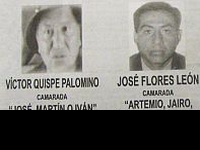
Victor Quispe, alias 'Jose' and Jose Flores, alias 'Artemio'. Government offers a reward of S/ 1 Million Soles for their capture/ information to help capture.
with poverty and narcoterrorists [composed of small farmers and the destitute; some of whom joined the Shining Path (a Maoist organization]. The poverty, which is deepest and most prolonged, in the remote and impoverished areas of mountain regions and in Lima, where life seldom has meaning and continues to exist in Perú. Poverty is widespread and hits hardest the young, teenagers and young adults to steal to survive. Many of the poor turn to theft, prostitution, and crime. Children as long as four were commonly seen on Lima streets attempting to sell candy, beg for centavos (pennies) and even offering “favors” (implying sex), while young girls, many still very young, were found easily at bars and discotheques willing to perform any sexual act for a meal or a few soles. Old women were arrested (and after a stern warming allowed to return to their homes) for breaking into the homes of those they thought had more than they, a reality quite common when women posing as evangelistic missionaries today in Chiclayo enter homes of the eldery on poor streets such as Cabrerra Colon, go into homes and pick up objects and claim them to be their own, which they never have been (I learned this by watching such would-be theft in February 2011 on in a house of a poor woman on that street, but the police would do nothing as the police frequently receive(d) payment to look the other way.http://www.zimbio.com/Alberto+Fujimori/articles/N4ROBj3QJ4b/Cocaine+rebels+haunt+Peru+remote+jungle) grow[ing] cocaine to sell with large shares of its revenues being filtered to Montesinos and his spy network through Keiko Sophia Fujimori (http://www.cbc.ca/news/world/story/2009/07/20/fujimori-embezzlement.html; cp. http://www.blythe.org/peru-pcp/newflag/nf9801/news.htm).
Poverty was high during the dictatorship of Alberto Fujimori, but in his final years it climbed rapidly. Contrary to contemporary (current) belief, that Perú was terrified by narcotrafficking, as the Library of Congress of the USA noted: “Peruvians saw drugs as primarily a United States problem, and the least of their concerns, given the economic crisis, the SL, and the outbreak of cholera” Fujimori’s coup threatened the entire economic recovery strategy of reinsertion into the Latin community, and more than 6000 Peruvians fled to Chile, denouncing the Fujimori family as heading towards a plutocracy to enrich the Fujimori family. The withdrawal of aid by key members of Peru’s support group made the process of clearing arrears with the IMF virtually impossible and Argentina drew back frigidly from involvement. Despite international condemnation, Fujimori refused to rescind the suspension of constitutional government, and the armed forces reasserted their support for the measures, and the number of poor increased daily in Perú while Alberto groomed his daughter Keiko to succeed him as ruler of Perú (read: http://countrystudies.us/peru/96.htm a USA government publication issued by the USA Library of Congress).
By mid 2001 I received comments from Lacco Valley, the San Antonio community, which for many months in 2000 had … high altitude helicopters making daily round trip[s], two or three a day [over that area]. … at first the helicopters attracted attention, but then [the people] got used to them [and their daily multiple flights]. Lacco Valley that was part of my parish of Lares, and many times I was there in San Antonio [to fulfill] in response to my pastoral work as pastor.
I do not remember the date, but by 2002 a helicopter pilot, of which I can not give more details … [talked with me]. I said that in the circles of drivers [common carriers such as taxis, and other vehicles] commented that in 2000, [Fujimori had] five helicopters filled with the gold of Paititi, leading to [re: flying to] Japan where he spent a voluntary exile. One of the helicopters had fallen [crashed]. Another time someone told me that this operation lasted nine months. And on another occasion that gold had gone from Ica. [On the build up of Perú’s military read: http://www.elcomercio.com.pe/noticia…es-argentina_1] What has not yet been fully investigated is Fujimori’s relationship with (1) Japan where he claimed dual citizenship and expressed a desire to run for the Japanese Senate, (2) Chile where he sought temporary sanctuary to avoid being arrested in Perú, and (3) Argentina which claimed to have some of the Inka gold that, allegedly, Fujimori was demanding that it be returned to Perú as part of Perú’s heritage, but nothing was said during his final days in Perú or when he returned to Perú.
In August 2003, two Russian tourists who knew about my book, [inquired about] the Mantto [a group of 22 pyramids that were thought to house the Inka treasury of gold} near Paratoari as a part of Machu Pichu]. I had been there eight years ago so I took them to Mantto. At the top I almost fainted, a little tired, for I was 76 years, and it was difficult for me to rise again, but I did, and was surprised by what I saw.
It was the fruit of the book. I told myself: it’s true what he [the pilot] said who was he carrying, who? Five helicopters [all were military helicopters and part of the purchase Fujimori completed; http://fujimoriontrial.org/?p=309 and no. 4 ofhttp://www.rree.gob.pe/portal/enlaces.nsf/0/fe509ecbfc0f63ee05256e8a005eea73?OpenDocument] stole the gold Paititi? And here in the Mantto region? From what I see? Here’s the proof. It’s true.
Huaqueado was technically good, but looted. An explosion occurred. A rock about eight feet high and one and a half in diameter no longer existed. It been dynamited. Where it had been now appeared the mouth of a well approximately one meter in diameter and filled with [the debris of] rocks destroyed by dynamite. I do not know the depth, but I guess there was a good ton or more. There was a sort of sidewalk about a meter wide and about eight meters long carved stone, everything being leveled by the dynamite. What was she hiding? Possibly in other caves and grottos in the back of the mural.
From what I see, there have been several cubic meters of gold. You must remember that a cubic meter of solid gold weighs 24 tons.
After the looting, all the shot rock was piled along the base of the rocky area where there had been a village, and in which I appear in a previous snapshot. Now it was covered with earth, upon which grass huts were popping up [for the poor people] and the remains of before were hidden. Where the land was eroded, dried grass and stones appeared. The well was also full of stones covered with earth, which was flowing. Sorghum had been planted there before but now ten plants appeared among the rocks. I had come three years after the robbery.
The worst thing was that the precious historical mural by the Inkas was when the thieves left the Paititi. Now there are only one or two figures that can be seen. This mural was a farewell message, the last of the Inkas. There were scenes of war, dancing, a string, the four squares of Tahuantinsuyo, fourteen Inkas, a triple circle line. Now all has been deleted; there is not a trace [of the past after] the robbery. Anyone who goes Mantto now, without having known it before, will say that there never was anything in Mantto [since the criminals destroyed Perú’s historic past]. What nature could not erase or destroy, they [the criminals stealing the gold] did.
The Inkas hid these things when they used to draw, as it was their inventory, and a record which had been placed there to last forever. What if there had been solid gold statues of fourteen Inkas, natural size, which was never found? What about the chain of Huascar? [Huscar means “rope” or “chain” and was the name of the eldest living son of Inka ruler Huayna Capac. The lords of Cuzco who appointed him king of the Inkas soon regretted their decision, as Huascar defiled the temples of his forefathers and treated his people cruelly. Peaceful overtures from his brother Atahualpa, who governed Quito, a far distance from Cuzco, were rejected and Huascar had his brother’s messenger killed and the man’s skin made into a war drum, according to Spanish records. After this barbarous act that was not common among the Inkas, Huascar ordered his armies to attack Atahualpa’s army, declaring, “Bring me his head because I wish to drink from the skull.” So angry was he that some seemed hesitant to obey, Huascar continued with the open threat: “If you do not bring it to me, not one of you should return, {for if you return without my brother’s head} I will tear you all to pieces.” My translation is based on an account written in the diary of Juan de Betanzos, c. 1557, in Spanish].
What about the disk of the sun god? … [I personally have my doubts about the sun “god” as the Inkas have more references to goddesses (such as the earth, etc), that I am inclined to think that the chief deity was female and thus the sun goddess as seen with “the crying Mother goddess associated with the hill of Paccha. The Mother goddess was known for her healing abilities and pity on foreigners.]
How many tons, besides the infinite cultural historical value lost?
There, in front of the hill Paccha [sometimes spelled Pacha] is a crying Mother goddess, carved into the rock, with her children, helpless and hurt by the failure of her mission to guard the legacy of the Inkas. She could not be destroyed completely; her remains area as a mute witness.
In Choquecancha, 40 years ago, I picked up the tradition of the elders of the time that the statues of the Inkas were in the Hornasinas: the wall next to the plaza, while the Inka were there for three months dispatching groups traveling to Paititi, and hid so much weight that could not have been loaded. All this happened, according to comments heard from the former, while the Spanish had been absent from Cusco to capture Manco Inka in Vilcabamba. That Manco Inka, in secret agreement with Huainaapoc [the Young King]. Was he the son of another Manco Inka? Or was this name the second name of the youth [a matriarchal name?]. Or was it someone older, who had extended the Inka Empire, for about twenty years until the Great Paititi ruled, in the Sierra de Parecis, Rondonia in Brazil, according to the chronicles.
This Huainaapoc may have been the Inka who spent three months in Choquecancha organizing expeditions. He was the son of the Inka ruler Manco Grand Paititi, and born there. Those who left the Grand Paititi did the Collao, Tiahuanaco, Cochabamba, Pampa de Mojos, and following the Great River (Rio Grande in Bolivia), arrived at Great Paititi where Manco Inka (the largest). On the banks of the Rio Grande where a large number of fugitives [emigrants] were left behind because they failed to stop the invaders, later were given the name of Guarayos—whose descendants still live in these forests. I have known some of them, because I spent a year in Santa Cruz. By then I knew nothing of Paititi. Just the city of Santa Cruz had its origin and organization camp for expeditions out to conquer the Great Paititi, but those who would conquer it never succeeded.
Will you be able to recover this Inka wealth? Does it exist any more or have the Japanese who want to load in “good time” created this crime, this infamy? Why [was the gold taken out of this region]? [Was it stolen] for a favorite son [Alberto Fujimori]? [Or was it stolen to enrich] Japan?
Having personal knowledge of all this, I found a good map of Perú. I looked made a ruler marking the shorter [and most] straight [line] to get from the Paititi [to] the sea and the line passed through the city of Ica. Then I remembered the estate [location or standing] of the First Lady [Keiko Fujimori standing] on the heights of Ica (la entonces señorita Primera Dama del Perú (Keiko Sofía Fujimori) había creado en la zona de la ciudad de Ica), and the other more than the last on a boat anchored offshore, without witnesses. The [pilots] return[ed] with fuel and supplies for the Chargers, they would not use Peruvian pilots and controllers, but foreign mafias. If there was a Peruvian [he was] deceived [by promises of] insurance and would not speak.
[I] placed on the map the specific location of the community of San Antonio de Lacco, and it was exactly in the way of the shortest straight line to the sea. It was on the outskirts of San Antonio that the helicopters flew.
Regarding the downed helicopter, the latest report I received from a very reliable source, given by the Commander of the Army, is that had fallen into Mameria, which itself is in the path of the straight line and ending the territory of Paititi. Very close. Shortly after having taken flight [it crashed]. The report was rigged [rewritten] to claim that the helicopter was from a gold mine that I do not know, bringing gold to Lima. Yes wearing gold, but not a nonexistent gold mine or one that could not be reached by boat.
The fall of this helicopter is what ended the nine-month operation, and then there occurred the great escape that made everyone nervous. I have fierce awareness of the seriousness of what I’m doing public under my full and sole responsibility and consequences. Advertising, unreported, which I do not compete with me.
Herbert Mujica Rojas wrote:
There are sad and horrible things happen because of the publication of my book research in the PAI-TITI, by Father Otorongo, in his first edition of only 180 copies. I have found personally tested and verified in the Mantto. In this second edition I did not want to make changes, or add or remove anything from that edition.
I’m a real witness of what it was like before that infamous Mantto operation, and know what it was like afterwards. Certainly it was no less the same, or [possibly] worse, what happened in the same Paititi. Has been no theft of the third century of the millennium? Theft is the creation of mankind.
One thousand, two thousand tons of worked gold, artistic?
Or more?
Nobody could steal more than these two gentlemen.
What will be forever fried in a pool of molten gold? What will be served with condiments of lies, deceit? What about their accomplices?
Hopefully you now understand once and for all that the wonderful Paititi exists, and that it should be bought to light. Is it possible that the lords [leaders or chiefs or business executives] of INRENA, and INC (cf.http://www.parkswatch.org/parkprofile.php?l=eng&country=per&park=mphs&page=man), PROM-MANU (the Spanish text is at http://ja-jp.facebook.com/note.php?note_id=10150103654963251; on the Manu National Park see:http://www.manu-wildlife-center.com/) project operating in those valleys have not noticed what happened? Complications [over tactics, merit, or profit]? Surely the geologists and Japanese mining projects of Nippon have studied well the projects for the exploitation of this great mine with the resurrection of the ruling dictatorship in Peru [of the Fujimoris]. You must do the same for Perú. It must not be sold, auctioned, nor given away.
America is a rich nation that sits on a bank of hundreds or thousands of tons of painted green slips [dollars], [while] Perú is a “poor man” [an impoverished nation] who [that] is sitting on a bank of thousands or millions of tons of gold. The Paititi is a mine that has enriched everybody except Perú.
The Inkas worked this gold mine without causing any pollution. The Inkas washed the gold with mineral water in the Choritiari River, on Lake Parrime square, very near the great furnaces and factory. This gap Parrime was connected with the downtown Paititi through a tiered tunnel about a mile long. The lake no longer exists because of the flood caused by the collapse of the waterfall as it was artificial. It was decanted gold coming from the mine, and had to pass through gates and other facilities. It was the heaviest, and the rest in the channels that are seen in the picture after the lagoon [lake was created]. All this is no more by the collapse of the waterfall, which occurred between the month of September 1993 when the aircraft took this picture and the year 1999 when I received news that something had happened with the fall [of the plane in the land] of the Inka, but it was registered in the photo of the plane [ordered by the Fujimoris].
I suggest that we improve the law of Manu National Park, to make it more realistic, intelligent, nationalistic and more human with the natives and their needs. A Peruvian group of workers must assemble and dispatch from our country all companies that are poisoning Peru [for foreign countries only seek wealth for their own people].
As the author of this blog, I admit with shame, that I am a citizen of the USA, born in the State of Iowa. The endless greed of the Koch Brothers of Kansas have taken over Congress and their Tea Bag Party that has cannibalized the Midwest, pushing fascism into the governments of Wisconsin, Iowa, Indiana, Ohio, New Jersey, Florida, where anti-human rights majorities strip labor of basic rights of collective bargaining, public assembly, and more, has made the USA a nation unfit for others to imitate, for the worse elements that straggle out of such mediocre schools as Regency University, Liberty University, Oral Roberts University, and so forth have no interest in democracy or the rights of mortals. They follow the fictional preachifications of their founders and seek the enslavement of Third World Nations through FTA to gain wealth at minimal cost. The USA has devolved into a land of haves and have-nots: a nation with an increasing poverty rate, escalating illiteracy rate and among the highest dropouts in high schools, number more than 1 every 26 seconds since 2009.
Since the days of the USA Supreme Court appointed President, George W. Bush, the Administration has launched repeated attacks upon civil liberties from DOMA and various evangelical extremist religions (such as the Westboro Baptist Church of Kansas) who have also rifled in on human rights to the propaganda and prevarications of Michelle Bachman, Sarah Palin, Glenn Beck and the Family of C Street in Washington DC (Shartlet, Jeff (2009). The Family : the secret fundamentalism at the heart of American power. New York: Harper; Sharlet, Jeff (2010). C Street : the fundamentalist threat to American democracy. New York: Little, Brown & Co. ) who argue that their Jesus wants only businessmen who plunder wealth to prove their election to heaven. They are joined by others who would have been more comfortable in Nazi Germany or present-day Uganda following the USA ministries of Scott Lively and his gaggle of creatures who call for massive assassinations and executions of those who do not agree with him (http://www.publiceye.org/publications/globalizing-the-culture-wars/scott-lively.php)–imitating the strong hand of Alberto Fujimori.
It is time that Perú refines and defines itself and plots its own destiny instead of allowing the lumber factories of Mississippi (such as the Newman Lumber Company) and Alabama (in February 2000, the Bozovich Group, Perú’s largest mahogany exporter, formed a joint venture with the Price family owned South American Lumber Imports Inc. Price took over the business from his father and operates it from a one-story home-turned-office in a middle-class neighborhood in Evergreen. In February, Price changed his company’s name to Bozovich. Evergreen Alabama is about 100 miles north of the city of Mobile where most illegal mahogany is imported, with these imports equaling $56 million a year in business in the USA. Price’s company was peripherally involved in a scandal during the 1990s that cost a University of Mobile president his job. Then-President Michael Magnoli and then-Vice President Roger Gonzalez, who ran the school’s Latin American Branch Campus in Nicaragua, formed a venture that was to import mahogany through South American Lumber Imports Inc. But the venture fell through; a contractor in Nicaragua failed to deliver the wood, saying he had not received money promised to him by the UM officials. Gonzalez was ousted as head of the Nicaraguan campus, which was later sold. Magnoli, who was no longer president, pleaded guilty in 1999 to felony federal income tax fraud in connection with other dealings involving Gonzalez and the university’s Nicaraguan campus. A second Alabama company, the Maderera Gutierrez y Hernandez Ltda., meaning Lumber Gutierrez and Hernandez) is in business to cut down the remaining mahogany forests to build tables for rich Americans). This was all accomplished with the ratification of the Free Trade Agreement (FTA) between the USA and Perú.
Championed by Perú President Alan Garcia Perez, the FTA has been killing Perú for years (read: Study on Logging and Subsistance Hunting. Edinburgh, GB. Project Las Piedras: A socio-ecological investigation into the impact of illegal logging activity in Las Piedras, Madre de Dios, Peru. 2003.http://www.peruforests.org/documents/Studies/LCLasPiedrasFinalReport.pdf ; cp. U.S. Trade Representative: Andean TPA Interim Environmental Review. pg. 14. 28 February 05.http://www.ustr.gov/Trade_Agreements/Bilateral/Peru_TPA/Section_Index.html).
The cost of the mahogany forests in Perú is destroying both the climate and the land of Perú (as I wrote in a previous blog). By 2030, it is conservatively estimated by climatologists and other scientists, Perú will have no water, and with its forests diminishing it will become hotter, the land poorer and less productive, and Peruanos will seek refuge in other unwelcoming nations.
It is past time that the people of other nations pay a just price for the products they enjoy that are grown in Perú. It is nearly too late to save Perú with the snow-capped glaciers covering the Andes Mountains as mining strips the land below them so that, most likely by 2030, the nation of Perú no longer has water to drink or use, and its people and its cattle will begin a terrifying and terrible exodus from the land that was Perú.
5 responses to “Paititi and Fujimori corruption, theft and murder in Perú”
- Pingback: Keiko Fujimori: Thief, Liar, Assassin and President? « Arthur Frederick Ide's Blog
- Pingback: Corruption in Perú and the Fujimoris « Arthur Frederick Ide's Blog
ventura25
November 22, 2011 at 6:40 PMThis is too much, it is better not to know the truth. I have always thought there is corruption, but the more I find out what these so called leaders do to Peru, it breaks my heart. Unfortunately, Corrupted leaders always work with criminals. Like the billionaire Paul Singer who helped Fujimori escape from Peru, how? by selling part of Peru’s treassuries to Paul Singer. While the peruvians are starving. What is worse, people do not think before supporting their leaders. For instance, many peruvians love Keiko. She should be married to the son of North Korean’s corrupt leader “Kim Jong-il” There is no difference between the two of them. They are the same.



